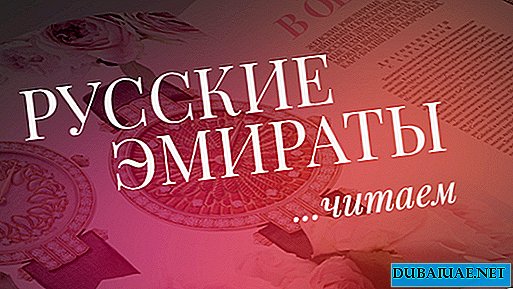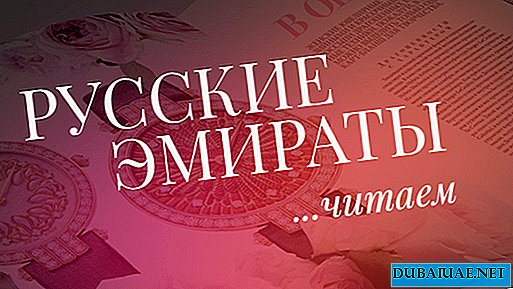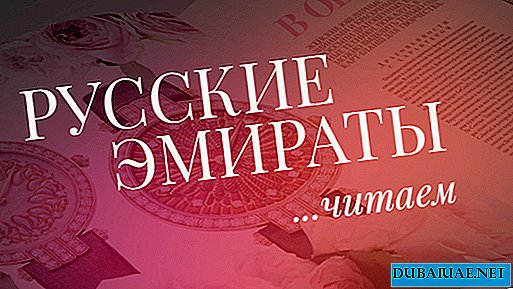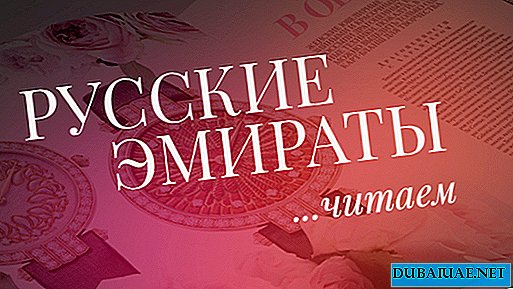Opening the window beyond paradise;
Oh my faithful slave Mikola
Go around you Russian edge;
Protect there in black troubles
Grieved tormented people
Pray with him for victories
And for the beggar of their comfort ...
S. Yesenin, Mikola, 1913.
He also praised the generosity of Nicholas,
Who saved the brides from poverty
Young years directing to honor.
Dante, Purgatory, Canto XX: 31-33.

 Saint Nicholas is one of the most revered and beloved saints in the whole world. Each nation considers it “their own” and gives its appearance special features. At the same time, however, the main characteristics of this saint are preserved, in the first place - his eternal desire to help people who are weak, humiliated, persecuted, suffering from injustice. Seamen, farmers, and girls of marriageable age consider him his patron. The Christian world of the West especially honors his intercession for children; he is also considered the "keeper of the earth's waters." Later, already in the Orthodox tradition, Saint Nicholas received two more nicknames - Nicholas the Wonderworker and Nicholas the Pleasant.
Saint Nicholas is one of the most revered and beloved saints in the whole world. Each nation considers it “their own” and gives its appearance special features. At the same time, however, the main characteristics of this saint are preserved, in the first place - his eternal desire to help people who are weak, humiliated, persecuted, suffering from injustice. Seamen, farmers, and girls of marriageable age consider him his patron. The Christian world of the West especially honors his intercession for children; he is also considered the "keeper of the earth's waters." Later, already in the Orthodox tradition, Saint Nicholas received two more nicknames - Nicholas the Wonderworker and Nicholas the Pleasant.
Nicholas, the future great Saint, was born in Asia Minor at the turn of the 3rd-4th centuries (sometimes even the exact dates of life are called: 260-343), when this land was not yet captured by the Turks, and in its culture and language belonged entirely to the Greek world . The unusual veneration of St. Nicholas in Russia misleads many: they believe that he allegedly comes from there. In fact, Nicholas was born in the coastal city of Patara, on the Lycia Peninsula, which is located in what is now Turkey. The Apostle Paul himself landed in the harbor of Patars during his missionary trips. The fact that Asia Minor belonged to Hellenic civilization during this era, despite its nominal inclusion in the Roman Empire, allows us to consider St. Nicholas as "Greek." His Greek name Nikolaos means "the victorious people", and as we will see below, the people in his life always played a big role. From some everyday episodes (dowry to girls, elections to bishops), we can conclude that Nicholas came from a wealthy, perhaps even aristocratic family.
Saint's life
Interesting data on the childhood of St. Nicholas was reported in the VIII century by a Greek monk, Michael Archimandrite. He wrote that Nicholas, from the cradle, was observing church rules, which people follow as adults, meaningfully It is in this context that one should relate to the episode with maternal feeding. According to Mikhail Archimandrite, Nikolai was still fasting on Wednesdays and Fridays in his cradle: on these days he fell to his mother’s breast only once, after his parents' evening prayers, and the rest of the time he ate like all babies. The child grew up, since childhood, showing the features of many virtues. His mercy and charity were especially distinguished. Little Nikolai avoided the noisy games of his peers, trying to follow the gospel covenants. The lad kept his chastity, and if there was no special need, he avoided the girl's society. Charity and charity are the virtues that were most pronounced in the most glorious episodes of the life of St. Nicholas. The story of a dowry for girls, in which the saint threw out a window to an inconsolable poor father who had three daughters and was going to send them to fornication, in order to earn at least some means of subsistence, three bags of gold to protect the bodies and souls of the unfortunate, inspired many artists, especially western ones. Moreover, thanks to this legend, the most famous attribute of St. Nicholas the Wonderworker was established, which allows us to always know his face and name him in an infallible way. If the bishop has three golden balls in his hands or somewhere below the icon, then this, of course, is none other than St. Nicholas the Wonderworker.
Bari Basilica
We want to get acquainted with Nicholas the Wonderworker or Nicholas of Myra, or, as he is called in the West, Nicholas of Bari, led to the city of Bari (Italy). The basilica, where the relics of St. Nicholas is revered, rises in the heart of the old city, a five-minute walk from the seaport of Bari and a quarter of an hour from the train station. The temple is the clearest example of the Romanesque style, that is, the old, majestic style. The history of the Basilica of St. Nicholas is revealed in its appearance, with which it resembles a castle rather than a church. It should not be forgotten that in the Norman period the basilica served more than once as a fortress for the defense of the city. The four courtyards surrounding it were closed in the old days, the clergy provided them to merchants during fairs on May and December holidays. Today, when approaching from the embankment, immediately after the arch, a magnificent view of the entire medieval complex of the basilica opens. With all the diversity and complexity of architecture, the unity of composition cannot be denied. Despite some minor late changes, it is safe to say that the decoration of the church dates from the period 1090-1123. (architecture, sculpture and lost paintings).
The Basilica of Bari was built in honor of St. Nicholas, Bishop of Mira in Asia Minor, during the reign of Emperor Constantine (306-337). From the biography of the Saint, compiled in the IV-V centuries, only the chapter on the salvation of three inhabitants of Mira innocently sentenced to execution and on three Roman military leaders in the prison of Constantinople is completely preserved. The participation of St. Nicholas in the Ecumenical Council in Nicaea (325) is confirmed by the Byzantine historian Theodore Reader around 515. According to legend, the Miracle Worker was in advanced years at the Council of Nicaea, and therefore we can assume that he died about 345 after the birth of Christ. The day of his burial - December 6 (19) - became a common Christian holiday. In Russia, this day began to be nicknamed "Nikola Winter".
Pilgrims from all over the world strive for the cancer of St. Nicholas in the Lycian Worlds and for the sake of the miraculous world, or "manna." When the Bari sailors cracked the marble slab in order to extract the relics of St. Nicholas from the crayfish, they found them literally floating in the water. The myrrh flow continued even after the relics of the saint were transferred to the city of Bari, from the very first years of the presence of crayfish on Italian soil. It was here that a pious custom arose to pour the world into bottles and then distribute them to pilgrims arriving in Bari from all corners of the Christian Eikumena. From Mira - to Bari
The idea to go to the Worlds and take out the relics of St. Nicholas arose in the minds of the Barians after 1071, when Bari was captured by the Normans and lost the role of the capital of Byzantine Italy. In those days, the presence of the relics of one or another saint was not only revered as a sign of heavenly protection, but also caused an influx of pilgrims, which, in turn, helped the economic development of the region. There is no doubt that the Barians long before the expedition to the Worlds deeply honored St. Nicholas. The choice of Saint Nicholas was, however, dictated not only by his local veneration: Asia Minor lay on the traditional path of the Bari merchants, who sailed to Syrian Antioch for the sale of grain and the purchase of fabrics.
Adhering to Cape Andriake, which had long been a harbor for Mira, 47 Barians went ashore and went to the Church of St. Nicholas, which was located one kilometer from the city. Born in Patara and becoming a bishop in the Worlds, Nikolai, as appears from his life, as if he had not left his native Asia Minor (now Turkey), after his death, his relics rested in the Worlds. Greek monks escorted the “pilgrims” to the tomb of St. Nicholas, where they suddenly announced their intention to take away the relics, citing a prophetic dream in which St. Nicholas himself ordered them to take his relics from Mira to Bari. After some fuss, two young men, Barite Matteo and Frenchman Alexander, broke the stone cover of the crayfish and took out the relics of St. Nicholas, which literally floated in the incense "manna" emanating from them. They handed over the relics to two Bari priests, the fathers Luna and Grimwald. In an undertone, singing a prayer, the captors went to the ship. The ship was already in the open sea when the angry inhabitants of the World, notified by the monks, came ashore. At first the sea was turbulent, but then the elements subsided, and the voyage passed safely.
On May 9 (22), 1087, three ships entered the port of Bari, and immediately many miracles happened near the relics. Since then, this day began to be considered the second holiday in honor of the famous saint (in Russian Orthodox tradition, this day was called "Veshniy Veshniy"). At that moment, the rulers of the city were absent: the Duke Fuggerius and Prince Boemund were in Rome, where Pope Victor III crowned the tiara. Therefore, the sailors solemnly handed over the shrine to the respected Benedictine abbot Elijah. Two days later, Archbishop Urson appeared in Bari, heading to Trani in order to sail from there to the Holy Land. The archbishop decided that such a shrine should be kept in the cathedral and sent his people to take the relics.
However, the people wished otherwise: the Barians thought to build a special temple for St. Nicholas worthy of glory. When the townspeople refused to comply with the archbishop’s order, a real battle broke out: three young men died. Abbot Elijah was able to convince the archbishop of the need for the construction of a new church - a decision was made to allocate part of the territory of the then empty palace of the Byzantine governor for this purpose. Using the trust of both the archbishop and the people, Abbot Elijah in early June of the same 1087 began to build a magnificent basilica, which is still one of the best examples of Romanesque architecture in Europe.
 Crypt Nicholas the Wonderworker
Crypt Nicholas the Wonderworker
The tomb of St. Nicholas is located in Crypt (underground church). The construction of Crypta lasted two years, and in 1089, Abbot Elijah invited Pope Urban II, who was at that time in Melfi, in order to transfer the relics of the saint to the throne just raised. The tomb of St. Nicholas was already ready for the moment when Pope Urban II consecrated its altar on October 1, 1089. Initially austere as an altar, the tomb was soon decorated with silver. In 1319, a silver throne was erected on it; the chapel arch was also decorated with silver. Silver plating was donated by the king of Serbia Uros II Milutin. When the Baroque style came into fashion, this throne was considered obsolete. Neapolitan masters completely redid it. On the front board of the throne are a door and two sculptures of angels facing it with bottles of “manna”. The door serves not only to take manna, but also to allow believers to bend to the tomb and honor the relics of the saint. After restoration work 1953-1957 the silver throne was moved to the right transverse nave of the upper basilica. The tomb was returned to its original form.
The holy relics of St. Nicholas the Wonderworker (about 75 objects of the skeleton) are below the floor and are closed on all sides with reinforced concrete blocks. The absence of the remaining bones of the skeleton is explained by the fact that the Bari sailors were in a hurry, and therefore, they took only large bones. During the last inspection of the Holy Relics (it was carried out by the Air Force operators from London using special equipment), a skull was seen that occupied a central position, bone bones were located around it. The reconstruction of the skeleton was carried out by Professor Luigio Martino. The missing part of the Holy relics is located in various churches of the world, especially in Venice.
In the altar near the icon with the face of the Savior is a lamp in the shape of a caravel - a symbol of the unity of the Christian faith, based on two traditions - eastern and western. The lamp, lit by Pope Pius XI, was donated to the basilica in 1936 by the Roman Association of St. Nicholas during the "Fourth Holiday of the Christian Army." In support of ecumenism, the lamp was again lit together with Pope John Paul II and Metropolitan Mira Chrysostomos Konstanttnidis in 1984.
Relics myrrh-streaming
The manna (incense world) of St. Nicholas is the water that has been formed in the tomb of the saint since the time of the Holy Relics in the Worlds. According to two testimonies of that time (Nicephorus and John) at the moment when the Bari, pretending to be merchants, came for the Holy relics, they were in the liquid that filled the tomb of St. Nicholas. In fact, this liquid is a water of special purity, as established by studies conducted in 1925 in the chemical laboratory of the city of Bari.
The origin of this water is explained in different ways. However, even today the veneration of the Holy Manna is not stopped, since the water collected in the tomb, being in contact with the Holy relics and remaining clean, is a relic. The relics of the Saint are completely closed during the year; the hole leading to them opens only in the evening of May 9 (22) in the presence of a large number of believers. It was here that a pious custom arose to pour the world into bottles and then distribute them to Christian pilgrims arriving in Bari from all over the world. Already in the Life of St. Gottfried of Amiens (1107), one such bottle was reported, which fell on stones in the neighboring bay of St. George, and remained unharmed. St. Gottfried took this as a good sign in front of an audience with the pope, to solve a number of spiritual problems.
Over the centuries, documents testify to bottles distributed throughout Europe with miro, including kings, princes, popes. When the Bari Basilica was entrusted to the Dominican fathers in 1951, they maintained the pious tradition of distributing caraffina bottles with “manna,” which bring particular comfort to the sick. In fact, for many centuries the world from St. Nicholas has become one of the most desired relics, and whatever its origin - miraculous or natural - the very proximity of the world to the relics of the Holy makes it sacred. According to many believers with holy manna, they received healing. During the year, only 2-3 glasses of holy manna accumulate in the tomb. Part of this "pure manna" is preserved for churches and communities that particularly honor St. Nicholas, as well as for ecumenical purposes. Another part of it is distributed in a container with blessing faith for pilgrims and believers from dozens of countries flocking to the Bari Basilica.
Gifts to Nicholas the Wonderworker
Of particular interest is the treasury of the Basilica of St. Nicholas, where precious gifts from different times are collected. These include bowls, icon lamps, icons, arks, decoratively decorated prayer books and other objects donated to the Saint. Two inscriptions at the entrance remind us that the remains of the deceased canons rested in this bell tower from 1188 until a chapel of Saints Peter and Paul was built, connected to the palace by the rector of the church.
Inspection of the treasury usually begins on the left side of the entrance. Two windows are dedicated to Russian icons and lamps. Here is an icon donated by the Moss jeweler. Of greatest historical value is the lamp, donated by the brother of Tsar Alexander II, the Grand Duke of Constantinople, who visited Bari in 1859. The lamp with a blue brilliance stands out as a gift from Ivan Vasilievich Popov, who visited Bari in 1902. Red crosses are visible on the lamp donated by Nikolai and Maria Romanov. The inscription is visible on the gilded icon: "Pray of God for us. To the holy relics of St. Nicholas and the Miracle-Worker with Bari, who restores a fervent offering. December 6, 1856 N.V.A."
Ancient relics dating back to the 11th-12th centuries that were brought by the crusaders from the Holy Land are also exhibited here.Among them are particles of the relics of St. Apostle Thomas, as well as the tooth of St. Mary Magdalene and the spike from the crown of Jesus Christ, revered until the beginning of this century. Relics are also worthy of attention: a particle of the relics of St. Longinus, a Roman centurion piercing the body of Christ (gilded palm with arms), St. Apostle Jacob the Elder (right hand with a reed, St. Martyr Vincent (gilded palm with the heads of angels). Enamels, crowns, episcopal staves, vessels and dishes are stored from the windows, among them is an enamel with the image of St. Nicholas, the crown of Roger II. There is a staff of modern work, donated by Pope John Paul II during his visit to the basilica in February 1984.
The gifts of the most generous patron of the basilica of Charles II of Anjou, made by him in 1296, attract attention. The reason for his generosity is as follows. In 1284, Charles II of Anjou was sentenced to death in Sicily. He began to pray to St. Nicholas and St. Mary Magdalene, and the sentence was commuted to imprisonment, followed by complete release. He presented the basilica with 22 serviceful precious books, land holdings, as well as a beautiful Anjou cross (which completely covers the previous Byzantine cross with an inscription in Greek), a magnificent candelabra with rock crystal and an ark with a right hand of the relics of St. Sebastian. Magnificent memorial medals are also collected here to mark the 900th anniversary of the transfer of the Holy Relics in 1987.
The blessing of the saint and ... stockings with gifts
Now known not as the capital of southern Italy, but as the city of St. Nicholas, Bari has a special liturgical glory, and among its visitors there are a large number of prominent people. There are few temples in the world that can compare with the Basilica of St. Nicholas in Bari by the number of celebrities who visited them. St. Nicholas is one of the most revered Christian saints, so many pilgrims have come to Bari for a long time to bow to the relics of St. Nicholas the Wonderworker. In 1094, the famous preacher of the first crusade Peter the Hermit visited here. In 1086, almost all the famous knights of the first crusade wanted to receive the blessing of St. Nicholas before loading onto ships that set off to the East. The witness of those events - Fulkerio of Cartres calls the brother of the French king Hugo of Vermandois, Robert of Norman, Robert of Flanders, Stefan of Blois. Twice the basilica was visited by Pope Urban II, Eric Good Danish and future Pope Paschal II, St. Brigitte of Sweden. In the 12th century, Pope Calixtus II, King Roger II, visited the basilica. In 1182 King William II Good prayed at the Holy Relics. In 1197, after a crusade at the festival of lighting the upper church in the basilica, 5 archbishops and 28 German bishops visited. Charles II of Anjou, the most generous patron of the basilica, visited here in 1301, and in 1350, King Louis of Hungary.
And in the most troubled times of the Italian south, St. Nicholas Cathedral remained the embodied goal of pilgrims, especially from Russia, where, it seems, they love the Yearner most. Here at different times there were also representatives of the House of Romanov, including Tsarevich Alexei Petrovich (son of Peter the Great in 1717), who was hiding in Naples from his father's anger; Grand Duke Nicholas II (later became in 1892 the last Russian emperor).
In the twentieth century, among the famous visitors to the basilica were Victor Emanuel II with Queen Helen, King of Bulgaria Ferdinand, Duce Benito Mussolini, King of Greece George, Queen of Belgium Elizabeth. After the end of World War II, presidents of many republics, the Soviet cosmonaut Leonov, Pope John II, Prince of Wales Charles and Princess Diana visited the basilica. In the 21st century, the basilica was visited by Russian President VV Putin and Metropolitan Kirill of Kaliningrad and Smolensk. In front of the entrance to the basilica in the courtyard is a statue of St. Nicholas the Wonderworker (sculptor Zurab Tsereteli). The statue of the saint in front of the Russian Compound was made by the sculptor Vyacheslav Klykov.
The given names of popes, kings, emperors, saints do not, of course, exhaust all the honored guests of the basilica. Today the basilica is visited by Nobel laureates, famous scientists, figures in the field of medicine, art, literature. All visitors are fascinated by the grandeur of the basilica blessed by St. Nicholas. And if the city of Bari became famous in the world due to the presence of the relics of the saint, then St. Nicholas himself was often called Bari, especially among Western Christians.
Saint Nicholas the Wonderworker was the embodiment of mercy and philanthropy, care and protection for the weak. Saint Nicholas was very revered, especially in Russia, where, like in Bari, they celebrate this saint’s day on December 6 (old style or December 19 - new) and the day the relics were transferred on May 9 (old style), in memory of the events of 1087 of the year. In those distant days, there was one good tradition, still reverently observed in our old families, where grandmothers were raising children: at the end of the feast of St. Nicholas, stockings are hung by the fireplace, wonderfully filled with gifts in the morning. This is due to the generosity of St. Nicholas, who has always been especially disposed towards children. True, sweets - nuts, candied fruits and gingerbread are received as a gift by obedient children, those who behaved badly receive gift rods.









